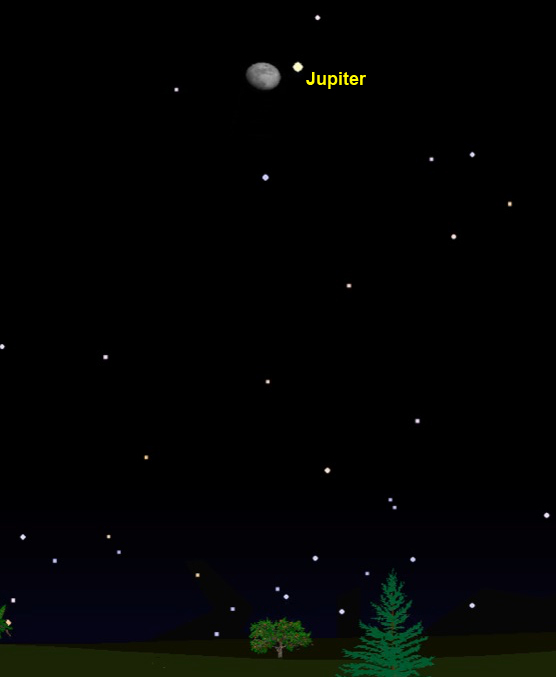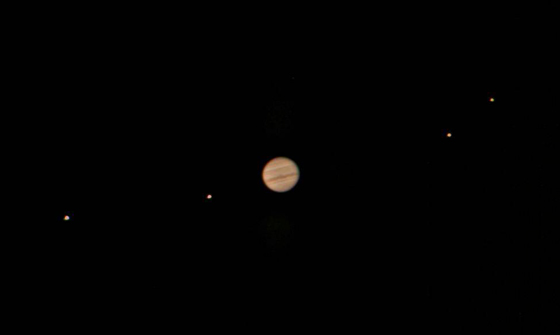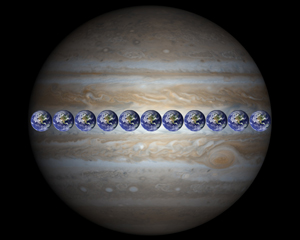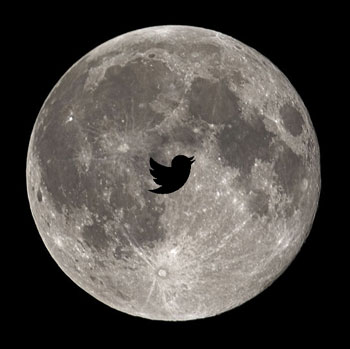On Sunday, May 7 you can use the Moon to find the planet Jupiter!

Through a telescope you may see up to four of Jupiter’s largest moons.

Furthermore, if you have a good telescope, you may make out some of the prominent horizontal cloud bands across the surface of the King of the Planets. You may also see up to four of Jupiter’s largest moons — the “Galilean satellites” — named after Galileo Galilei, who discovered them in 1610. These four moons move very quickly around the planet. In fact, if you observe them shortly after it gets dark, be sure to draw a diagram of where the moons are in relation to Jupiter. Then, observe the moons again a few hours later: If you do, you’ll notice the moons have moved significantly between your two observing sessions.
Fun facts about our solar system’s largest planet:

- If Earth were the size of a nickel, the gas giant would be about as big as a basketball, which in turn would make LeBron James a heck of a lot taller than he is now! 🙂
- Earth has one moon, Jupiter has 67
- The largest moon of Jupiter, Ganymede, is larger than the planet Mercury
- Jupiter’s atmosphere is mostly hydrogen and helium — like a star!
- The Great Red Spot could contain 2-3 planet Earths
- Earth rotates every 24 hours, the king of the planets rotates every 10 hours
- Earth revolves around the Sun once a year, Jupiter takes 12 years
Get our Moon Tweets!

Our Moon Tweets let you know when the Moon is in a Name A Star Live constellation.
Did you know you can use the Moon to identify where your star’s constellation is in the night sky? Follow us on Twitter where we let you know when the Moon appears in a Name A Star constellation (area of the night sky).
Name A Star Live offers some really good tools to learn about the night sky and find your star’s constellation. Visit our website to learn about our Virtual Planetarium software and planisphere constellation finder!